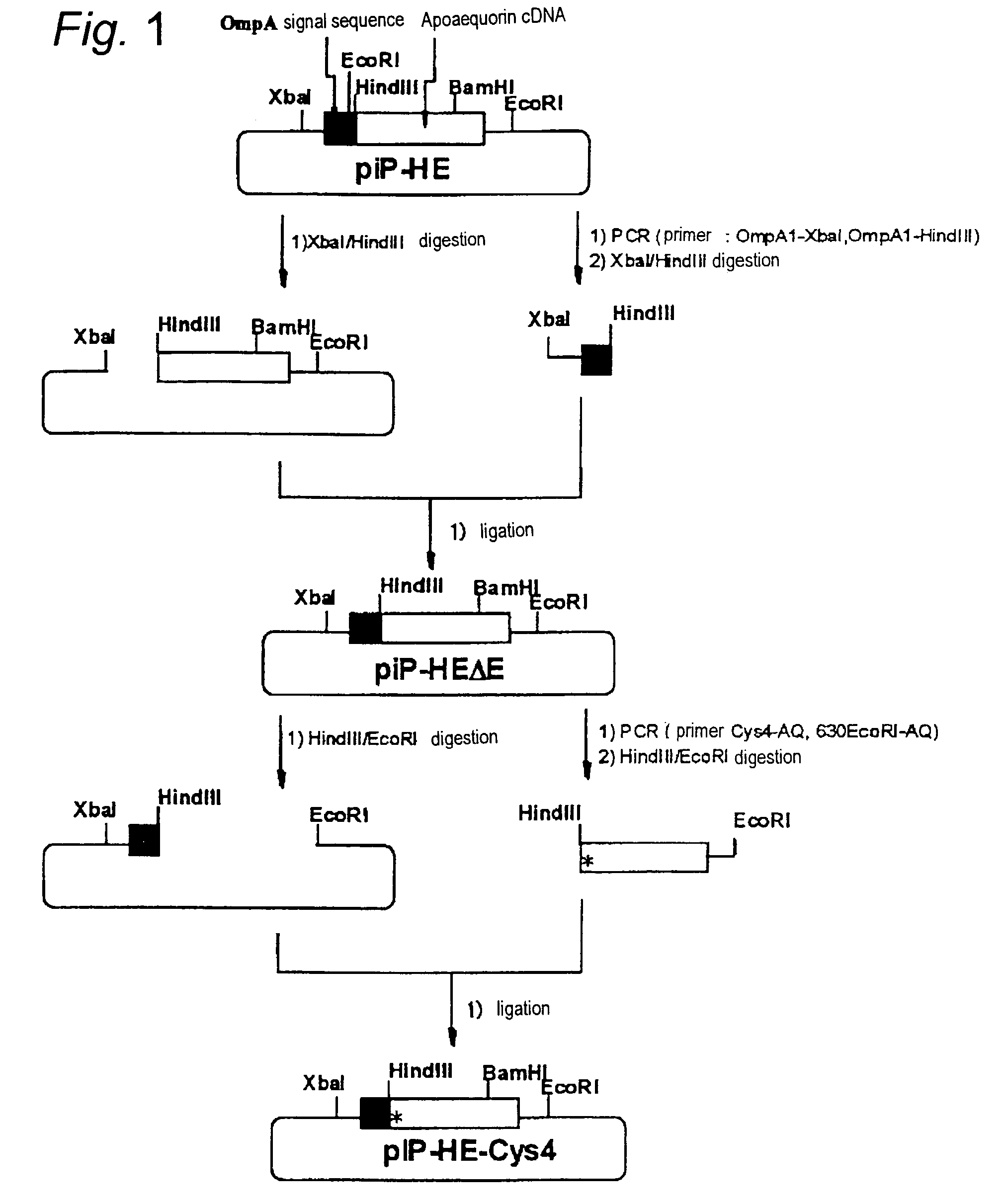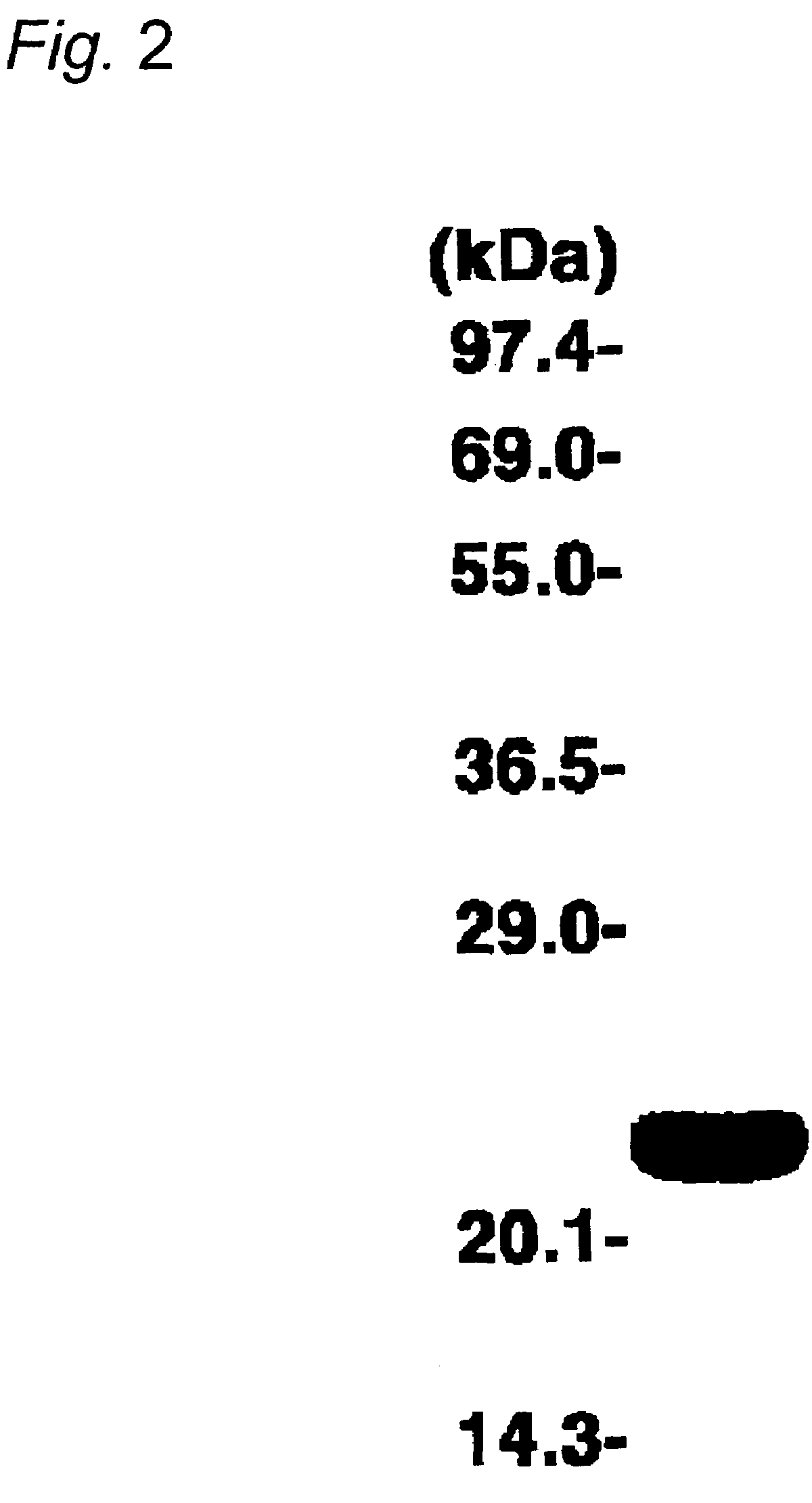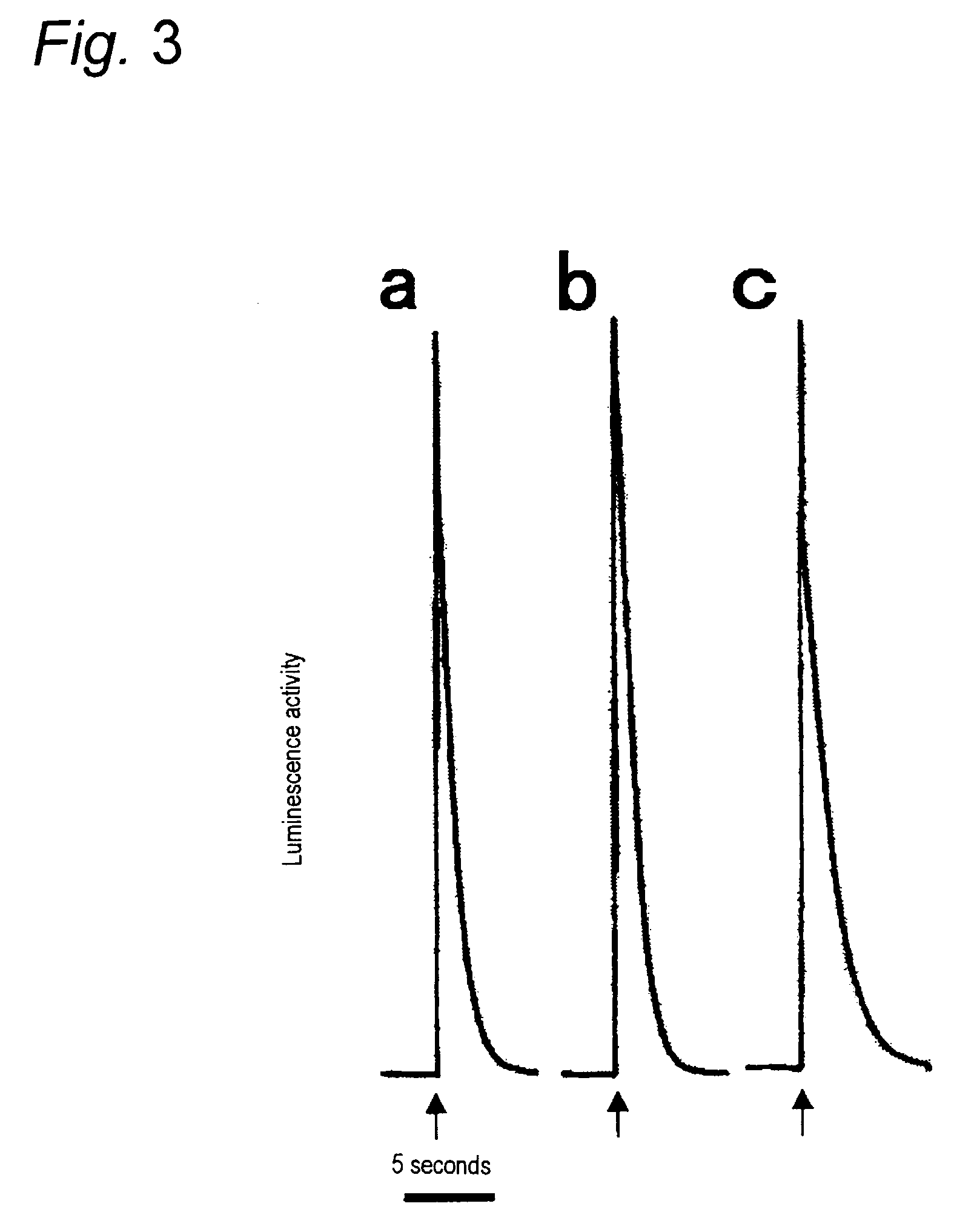Recombinant photoproteins and their conjugates
- Summary
- Abstract
- Description
- Claims
- Application Information
AI Technical Summary
Benefits of technology
Problems solved by technology
Method used
Image
Examples
example 1
Construction of Cysteine-Inserted Apoaequorin Expression Vector
[0041]From expression vector piP-HE for mutant apoaequorin having an Ala-Asn-Ser sequence instead of valine at the N-terminus of the wild-type apoaequorin (J. Biochem. 105, 473–477(1989)), the EcoRI restriction enzyme site near the N-terminus of the apoaequorin gene was deleted by PCR to construct piP-HEΔE. A cysteine residue was introduced at the 6th position from the N-terminus of the mutant apoaequorin (the 4th position from the N-terminus of the wild-type apoaequorin) by PCR to construct the cysteine-inserted aequorin gene expression vector piP-HE-Cys4. FIG. 1 shows the specific construction scheme.
[0042]There were used 0.1 μg of piP-HE plasmid as the template and 1 μg each of the PCR primers OmpA1-XbaI (5′TGG-AAC-TCT-AGA-TAA-CGA-GGG-CAA-AAA3′, SEQ. ID. No.3) and OmpA1-HindIII (5′TCC-AAG-CTT-GGA-GTT-CGC-GGC-CTG3′, SEQ. ID. No.4). A DNA Thermal Cycler (Perkin Elmer) and a GeneAmp PCR reagent kit containing AmpliTaq DN...
example 2
Separation of Cysteine-Inserted Apoaequorin-Producing Strain
[0044]The recombinant plasmid piP-HE-Cys4 produced in Example 1 was used as the expression vector for transformation of E. coli WA802 as the host according to an ordinary procedure. After culturing 20 transformants overnight at 30° C. in LB agar medium (10 g bactotryptone, 5 g yeast extract, 5 g sodium chloride in 1 L water, pH 7.2), they were transferred to LB liquid medium containing 5 mL of ampicillin (50 μg / mL) and further cultured at 37° C. for 16 hours. The strain with the highest luminescence activity, i.e. the highest Cys4-apoaequorin-producing strain, was selected and used for larger-scale culturing of a high luminescence activity strain.
example 3
Culturing of Cysteine-Inserted Apoaequorin-Producing Strain
[0045]The Cys4-apoaequorin-producing strain was cultured overnight at 30° C. and then transferred to LB liquid medium containing 50 mL of ampicillin (50 μg / mL). After further culturing at 30° C. for 8 hours, it was transferred into 2 L of fresh LB liquid medium and cultured overnight (18 hours) at 37° C. The cells and culturing solution were separated by low-speed centrifugation (5000×g). The cells and culturing solution both contained the expressed apoaequorin and therefore both were stored as the starting materials for Cys4-apoaequorin purification.
PUM
| Property | Measurement | Unit |
|---|---|---|
| Length | aaaaa | aaaaa |
| Length | aaaaa | aaaaa |
| Ratio | aaaaa | aaaaa |
Abstract
Description
Claims
Application Information
 Login to View More
Login to View More - R&D
- Intellectual Property
- Life Sciences
- Materials
- Tech Scout
- Unparalleled Data Quality
- Higher Quality Content
- 60% Fewer Hallucinations
Browse by: Latest US Patents, China's latest patents, Technical Efficacy Thesaurus, Application Domain, Technology Topic, Popular Technical Reports.
© 2025 PatSnap. All rights reserved.Legal|Privacy policy|Modern Slavery Act Transparency Statement|Sitemap|About US| Contact US: help@patsnap.com



